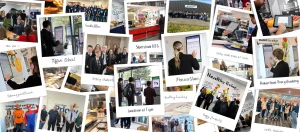Why schools are enhancing their cashless catering systems with pre-ordering solutions
For many pupils, lunchtime is their favourite part of the day, as they can spend time with friends and enjoy the foods they love. However, with lunchtimes getting shorter and the demand for popular lunch choices increasing, pupils are at risk of missing out on their favourite school meals.
Schools can reduce the issues associated with shorter lunchtimes by implementing a pre-order cashless system, enabling pupils to choose their favourite food options in advance.
Giving pupils control over lunch choices
There are many benefits to allowing pupils to pre-order their food, including reduced worries about choosing their favourite lunches. Eradicating the rush to the canteen before particular options sell out, and finally, reducing the risk of pupils opting out of lunch altogether if their favourite options are unavailable and encouraging pupils to make healthier choices by ordering their lunch in advance.
By giving pupils complete control over their lunches, they can feel empowered to make nutritious choices and will have access to their favourite food.
Many studies have found multiple benefits of pupils opting for school lunches over bringing a packed lunch. One study by Leeds University (2016) found that just 1.6% of packed lunches in primary schools met strict nutritional guidelines for hot school meals served in the school canteen. The study also found that only 1 in 5 lunchboxes contained any vegetables or salad.
With pre-order cashless systems, pupils opting for school meals, including those eligible for free school lunches, can be safe in the knowledge that they will have access to their lunch of choice each day, with a wide variety of nutritious options.
Reducing queuing times
Another factor to consider is time, which can often be a big issue at lunchtime with more schools reducing lunches to 45 minutes to increase lesson times. The University College London (2019) found that infants in England had 45 minutes less break time a week than in 1995, with secondary pupils losing 65 minutes over the same period.
Schools without a pre-order cashless system reduce the window of time for pupils to select their favourite lunch, resulting in students missing out on their favourite meals and, in some cases, opting to skip lunch altogether.
Pre-order cashless systems come in various formats, most popularly in the form of pre-order apps and kiosks. Mobile apps such as Fusion Online, designed for secondary school students, enable pupils to pick their choices from a set menu, view prices and check their live cashless balance.
On the other hand, pre-order kiosk technology encourages pupils to stay ahead of the queue and pre-order their meals via a simple user interface at multiple collection points within the school.
The benefits of pre-ordering school lunches start as early as primary school, with technology such as Smartboards, designed to allow younger pupils to choose their lunchtime meals in the classroom, combining cashless and pre-ordering into one integrated solution.
By implementing pre-ordering cashless solutions, younger pupils can be interested in their lunch choices and access their favourite lunch options each day.
An increasing number of schools are turning to pre-order cashless systems to ensure their pupils eat the food they enjoy every day, bringing enjoyment back to lunchtimes and allowing students of all backgrounds to take control of their school lunches.




